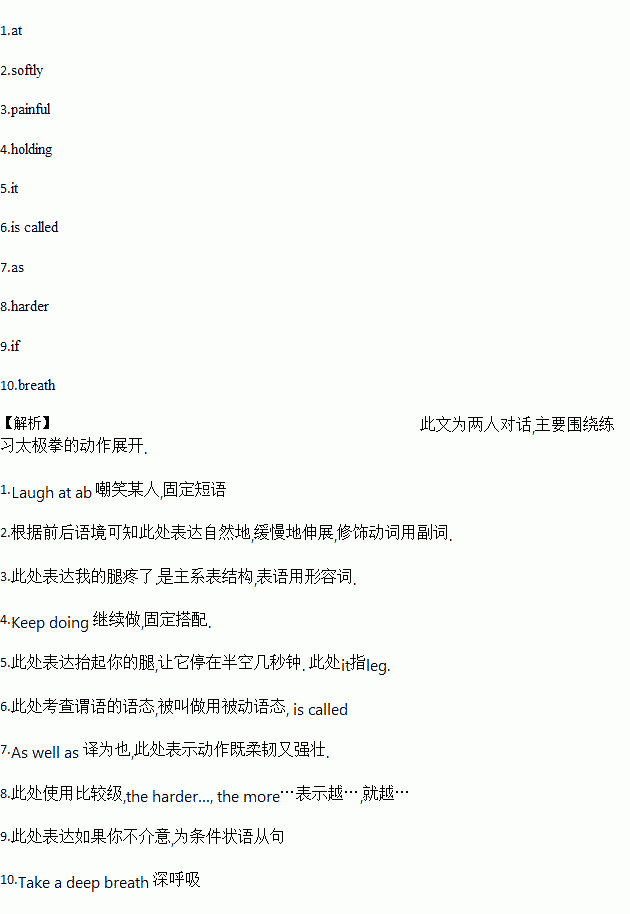题目内容
Jonny: Hey! I’m just practicing Tai Chi(太极).Would you like to join me?
Peter: I know nothing about it. Is it difficult?
Jonny: It seems easy, but you need a lot of practice. You just follow me like this.
Peter: OK. Don’t laugh 1.me. I may look funny.
Jonny: Bend your knees slightly and reach out your arms like tree branches, naturally and 2.(soft). Try to keep your body straight. Move slowly, then be sure to keep your balance and don’t let your body shake.
Peter: I cannot control my body well. My legs become3.(pain).
Jonny: Keep4.(hold) your position for a while. It helps develop your strength and flexibility. Raise your leg and let 5. stay in the air for seconds.
Peter: I feel my legs shaking. I cannot do this any longer.
Jonny: Be patient! Tai Chi6.(call)“shadow boxing" in English. It asks you to act like water: to be flexible as well7. strong. In real competition, a Tai Chi master borrows the strength of the competitor and uses this energy to fi ght back. The 8. (hard) you try to beat him, the more likely you will get hit. He controls you!
ght back. The 8. (hard) you try to beat him, the more likely you will get hit. He controls you!
Peter: Unbelievable! Oh..., 9. you don’t mind, I’ll stop and take a deep 10..
----____( )
| A. | My pleasure | B. | Good heavens | ||
| C. | Thanks a lot | D. | The same to you. |
| A. | who | B. | whose | C. | whom | D. | which |
| A. | opens | B. | is opened | C. | will open | D. | will be opened |

